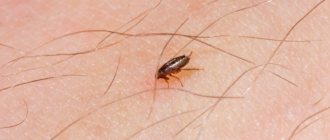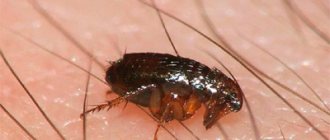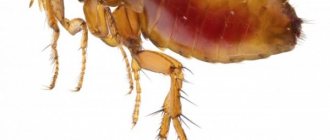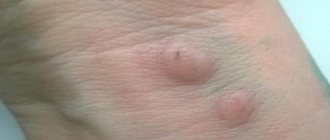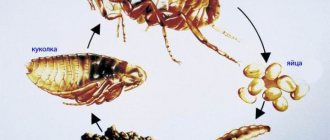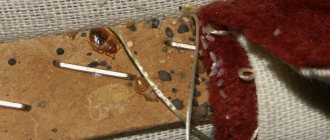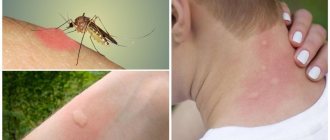Appearance and description of the flea
They belong to the order of arthropods. The body is slightly flattened on the sides of the body, the color ranges from red to brown or black. The outside is covered with a chitinous cover, the multiple arylluses of which in the form of bristles and protrusions help to stay on the body of the victim or in its habitat.
Additional fixation is provided by serrated plates. There is a mechanical method of destruction: detect it, pinch it with your fingers, crush it on a hard plane. When hungry, almost all representatives of fleas have a body length of up to 5 mm, but some individuals have a body length of up to 1.5 centimeters.
The body is divided into 3 parts: abdomen, chest, head. The flea has no wings . Here is the answer to the question: how many wings does a flea have ? But there are paws, which raises the question: how many legs does a flea have - 6 paws. The hind limbs work on the principle of a catapult. Therefore, fleas jump to a height of up to 1 meter. There are marigolds on each paw. Sensory organs: eyes and a special apparatus - pygidium, located on the abdomen. The flea sensitively recognizes potential danger. There are some people who are avoided by such parasites, this fact cannot be explained in any way.
What do bed fleas look like?
The bed flea, also called the household flea, is a microscopic parasite. It's difficult to see, but possible. The body with scales, similar to a shrimp, the sides are compressed, if the fleas are red, it means they are filled with blood that has not yet had time to be digested. The shell of a bed flea is difficult to crush with your hands. The length of the bloodsucker is 2-4 millimeters. The color is dark in young animals, yellow-brown in adults. There are no wings, there are three pairs of legs. The hind limbs are jerky, with their help fleas jump high and far. Linen fleas are held on the surface by bristles located on their tiny bodies. The antennae on their heads help fleas navigate in space by detecting sound waves and odors. The flea's mouth is a sucking proboscis with a needle tooth. Saliva does not contain an anesthetic enzyme, so flea bites are very sensitive.
Flea habitats
These blood-sucking parasites live wherever they can. There is a misconception that fleas fly , but they do not have wings. This is where fleas live in the wild: bird nests (maybe in domestic pigeons), houses, apartments, garden plots, and also in premises where livestock are kept. All representatives of the flea order are nothing more than a generalized image of bloodsuckers. Any warm-blooded organism can become a victim.
Places where fleas live in an apartment : carpeting, space behind baseboard ledges, bedding for pets and in other bedding for them. If there is a lot of clutter, you can easily notice it in the linen closet, inside the sofas. They are found on bed linen due to infrequent linen changes and dust accumulation.
On the ground floors, attics and basements, garbage heaps, grass - in these places, blood-sucking parasites attack rats, mice, cats, dogs. The occurrence of insects in human apartments is facilitated by littering the room with unnecessary things and other things, and an insufficient level of hygienic conditions in the apartment.
Human flea - what it looks like, photo
These insects are also called bed bugs, house bugs, and basement bugs. What do bed fleas look like : they are quite large compared to other types of fleas. Adults have a body 3-4 millimeters long. With such dimensions, they jump at a distance of up to one meter. In the photographs published here you can see the parasites in detail: they have a brown body color and no wings. The shape is flattened on the sides, which allows them to move perfectly in the density of hair. Fleas are difficult to catch and squash due to their structure. They cling to the skin with their paws and can dodge human fingers. It is impossible to see an insect while jumping; its presence is revealed by movement.
Types of fleas and structural features
Often found: chicken, cat, dog, human, rat, sand fleas. This classification is based on the principle of connection with the victim. But these are not all the characteristics of fleas : bloodsuckers of the same species are not present on the body of the same victim. They can attack representatives of different species, feed on them, and then rest or mate outside the victim's body. The structure of a flea in more detail under an ultramicroscope.
Human flea
In principle, they are no different from other adherents of this species. When observed under a microscope, one can notice the absence of the cephalic and thoracic teeth. Body length up to 3 mm. The victims are not only people, but also cats, dogs, horses, and wild animals. The danger is that fleas carry plague, pulicosis, and some helminths.
cat flea
This order of fleas develops in nests and burrows. In apartments, houses and other premises where a person directly lives or appears from time to time. It mainly affects the legs, feet, arms, abdomen, and back. Body length up to 5 mm. They are carriers of brucellosis, plague and other dangerous disorders.
Dog flea
The insect can be found not only in dogs, but also in others, even in humans. This variety is less common than cat fleas. Spends most of his time outside the victim. Body length is about 5 mm. The danger lies in the fact that during a bite it can transmit plague and trypanosomiasis. But do fleas have wings , no, but they can jump up to 1 meter in height, this also applies to other representatives of blood-sucking fleas.
Southern rat flea
This is the most dangerous order of fleas; it carries typhus, plague, encephalitis, and parasitic worms. Widely distributed in countries with subtropical and tropical climatological conditions. The body size is about 3 mm.
sand flea
The main difference is the size of the body, no more than 1 mm. Sand flea - habitat - subtropical areas. Those who like to vacation in India, Vietnam, Cuba, and the Dominican Republic should be the most attentive. These bloodsuckers not only bite painfully, but are also often the cause of such a peculiar disease as sarcopsillosis.
Regardless of the flea species, a fertile female can lay up to 50 eggs daily.
What fleas can harm a person
Mostly all types of known fleas live in houses and apartments: cat, dog, human. Each of them can pose a threat:
- Cat fleas: the most common parasite. They settle on animals in colonies that look like pieces of dirt. In the fur you can see excrement that looks like dark semolina. They feed on human blood by biting the skin; these areas then itch.
- Dog fleas: live on both cats and horses. A person is rarely attacked unless there is a primary host. They jump much further than they see. They also bite painfully and carry infectious diseases.
- Human fleas: feed on human blood, they are attracted by the smell of sweat and hair on the body. But this is only a transit point for the parasite. When the opportunity arises, they jump onto animals. The bites of these insects cause unbearable itching and possible inflammation around the wound. A person is at risk of contracting serious diseases from fleas.
There is a danger from bites, but severe consequences are extremely rare.
Flea mouthparts
The mouthparts are piercing-sucking type. Having bitten through the skin, the insect expands the wound, then plunges into it, reaching a blood vessel. At this time, the person feels pain, and then other symptoms appear, in particular itching. The enzyme injected by the parasite prevents hemostasis. These are the structural features of a flea . The epidemiological significance of fleas , due to their connection with the transmission of plague and other serious diseases, is great. Organs considered mandibles in blood-sucking parasites. They are actually lacinias. The upper lip is the hypopharynx. And what fleas feed on is clear from everything said above: the blood of warm-blooded vertebrates.
Where do fleas live?
Fleas live on all continents, including Antarctica, in nests and burrows, on the body of animals and humans. They are active at any time of the year.
The main hosts are warm-blooded mammals that have a home. If an animal lives in a burrow (nest), fleas attack it less often (only for feeding). Animals without shelter are a permanent habitat for parasites. Some species need to feed frequently, so they are always on the host's body. Ground fleas live closer to the floor (behind baseboards, on carpets), cat and dog fleas live on the pet’s bed.
Interesting facts about fleas
We looked at how fleas live, their characteristics and their interesting features. Every person has encountered blood-sucking organisms, especially if they keep animals in the house, so they know everything about fleas .
Now let's look at some interesting facts:
- The climate of Antarctica is destructive for all parasites, but not for Glaciopsyllus antarcticus. Birds and their nests are a source of food for them. Parasites are actively spreading everywhere, thanks to the mobility of donors.
- Strong, jumping and resilient: can jump without stopping 30,000 times in a row. If you freeze them for a year, after defrosting they continue to exist as if nothing had happened. Imagine how far a flea jumps: 1-1.5 meters.
- The spontaneous trade in old furniture, clothes, gizmos and other things that were previously in use was called the “Flea Market”. In those old days, such trash was full of fleas, moths, lice and other parasites. By buying such things, a person himself breeds bloodsuckers in his home.
- A flea cannot live on the victim's body permanently. She jumps from cat to dog, from person to another source of food, and so on in a vicious circle.
- Court ladies who did not undo their braids for months suffered from the bites of these parasites. A little later, they began to wear underwear made of silk fabric, because they could not linger on it.
In the modern world, they take a very responsible approach to solving problems with blood-sucking arthropods. Judging by history, the neglected problem influenced the fate of many states. They are blood-sucking like fleas, the type of development is arthropods. Development cycle: egg, larva, pupa, adult.
Preventing fleas in the house
Preventing biting insects is not difficult. If work or leisure activities involve animals, aerosols with a repellent should be used before contact. All clothing, as well as exposed parts of the body, except the face, need to be treated. It is advisable to examine your pets more often, as dogs run through garbage dumps and communicate with other animals. It’s better to play it safe, buy protective equipment for cats and dogs and, just in case, a guide : how to remove bed fleas. Nowadays, veterinary pharmacies sell collars, drops, and sprays that are used to treat animal fur. Do not create piles of garbage near your home.
If fleas nevertheless entered your home and began to terrorize the entire family, you urgently need to begin eliminating the parasite.
Watch the video of what a flea looks like under a microscope:
The danger of fleas to people
It can cause two diseases in humans: pulicosis and tungiasis. But, in addition, they are carriers of other serious diseases: typhus, toxocariasis, encephalitis, tularemia, brucellosis and various types of hepatitis. It is not difficult to detect these parasites. First you need to inspect the animal's fur. In addition to adult fleas, one cannot help but notice flea excrement in the form of dried lumps of blood. They can bite feet, legs, arms and other parts of the body (if they moved into bed or clothes). They usually live in carpeting, folds of furniture, and under baseboards.
To get rid of them, you should regularly carry out general cleaning. Don’t just wash the floors, but add bleach, bleach, and laundry soap shavings to the water. It can also be a strong-smelling essential oil. It is advisable to give preference to cedar or coniferous options. In addition, you should purchase special insecticidal products. With a large number of parasites, it will be impossible to do without special services. This will help prevent their further reproduction and destroy larvae and eggs.
How to detect bed fleas
Parasites prefer to live in warm carpets, dog bedding, and in cracks in furniture and floors. The bed is their temporary location. Fleas on the bed , they are attracted there by the smell of sweat, laundry that has not been washed for a long time, or the dusty contents of the bed parts. There they lay eggs and hide to rest. The humidity and warmth of the human body is the perfect place for a bloody lunch. That's why a person discovers a trail of red bites in the morning. More black grains of sand on the sheet indicate uninvited “guests”. At the first suspicion, you should put a sheet of white paper. Bed fleas , dark dots, will begin to appear and disappear instantly. So, the guesses were confirmed.
Dangers posed by pests
As a reward from bloodsuckers, people can get not only all sorts of local reactions on the surface of the skin, but also some dangerous diseases. They are carriers of tuberculosis, rat typhus, tularemia, listeriosis, and plague. Their consequences, if someone is unlucky enough to become infected with one of the ailments, can be very dire.
Scientists are confident that each insect is quite capable of giving people one of several hundred ailments that exist in the parasite’s body. There is no need to panic, because it is rare that a bloodsucker bite can lead to any disease. It is dangerous if bites appear on the body due to a sand flea. In this case, the risk of becoming infected increases significantly. With a strong bite, the affected area often transforms into an abscess. Bloodsuckers of this type are able to get under the skin and carry out reproduction there, as well as harmful life activities.
Video
How to get rid of it?
Parasites must be combated; modern drugs will help even in advanced cases. First you need to determine where the insects in the house come from. So, if fleas were brought by pets, they need to be treated. If parasites are coming from the basement or from neighbors, seal the existing cracks. To get rid of fleas at home, we recommend using modern insecticidal preparations that do not have a pungent odor and do not harm people and pets.
Chemicals
Since a flea cannot eat the bait, insecticidal preparations are produced in the form of a spray, powder, or aerosol. All means affect the nervous system of the parasite and paralyze it.
- Aerosols will help when treating a large affected area. Be sure to evacuate all residents, after the procedure, ventilate the room and do wet cleaning.
- Powders are distributed in habitats and have a long-lasting effect.
- Liquid microcapsules are not washed out after cleaning.
The most popular and effective are:
- Raptor spray, marked “against crawling insects”, has a pleasant smell;
- Combat - spray, analogue of Raptor;
- Sinuzan is a professional product with a rather unpleasant odor;
- Chlorpirimark is suitable not only for removing fleas, but also the Colorado potato beetle;
- Biorin is a professional product that destroys all existing insects;
- Dust is especially effective against parasite larvae;
- Delcid is an emulsion intended for pets;
- Pyrethrum - powder scattered in corners, poisons parasites.
After killing the insects, you need to do a wet cleaning by adding ammonia or eucalyptus essential oil to the water. It is advisable to place branches of wormwood and lavender under the bed.
Why are fleas dangerous?
It’s easy to guess that nothing good can be expected from them. However, let’s briefly consider why fleas are harmful.
First of all, it must be said that these insects are carriers of many diseases, including such dangerous ones as typhus and plague, which in the Middle Ages wiped out half of the population of Europe. In addition, fleas can also carry common infections, the contact of which on a bite wound can cause suppuration, infection and other “delights”.
Bites themselves are also an unpleasant feature of these pests. They bite very painfully, and the main points in most cases are the legs, in particular the feet.
Flea control products
To get rid of the presence of fleas, it is necessary to use appropriate means and methods for treating the room, since they do not permanently live on the human body. There are various medications available to kill fleas. They are available in the form of aerosols, powders, and concentrates (for example, “Delta Zone”). You can also resort to the help of a pest control service; this is more expensive than spray chemicals, but much more effective.
What to do and how to treat?
If you notice a flea bite on your body, you should immediately wash the affected area with soap and lubricate it with an antiseptic. After this, the blisters can be treated with the following means:
- Hydrocortisone ointment;
- Flucinar;
- sulfur ointment;
- Fenistil-gel in case of severe itching;
- balm "Rescuer".
If the victim is predisposed to allergic reactions, it is recommended to take an antihistamine, for example Claritin, Cetrin, Fexofenadine, etc.
The danger of human flea bites should not be underestimated. Insects are carriers of dangerous diseases, so the fight against them must begin immediately. You can find a wide range of insecticides on sale, in addition, you can resort to the services of specialists.



